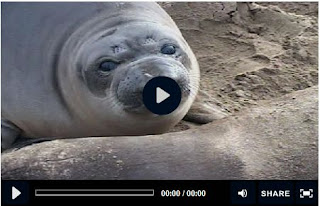Back in the early days of TOPP, one of our goals was to see if it might be possible to one day use the data we get from tagged animals to help us understand the ocean itself. This concept, which we dubbed "Animals as Ocean Sensors," came a giant step closer to reality last week, with the birth of a new partnership between GTOPP and the national Integrated Ocean Observing System (IOOS).
The concept behind the partnership is simple: electronic tags often carry a variety of environmental sensors to detect light, temperature, pressure and sometimes even salinity or other ocean chemistry. When we attach these tags to an animal - especially one like an elephant seal that dives continuously throughout its journeys - it provides an exceptionally rich dataset, profiling regions of the ocean that would be expensive and logistically difficult to access by human oceanographers.
In a series of meetings held March 2-3, 2011 at the NOAA Fisheries Service lab in Santa Cruz, California, biologging scientists worked directly with the IOOS team to discuss how best to begin the process of integrating animal tagging data into the Ocean Observing System. On Friday, March 4, we were joined here at the Hopkins Marine Station by the IOOS Director Zdenka Willis, to share the results of the meeting with the media and the public. You can see highlights of these discussions at the links below:
Monterey County Herald: Agencies Join Forces to Track Marine Animals in Monterey Bay
Subscribe to:
Post Comments (Atom)



No comments:
Post a Comment